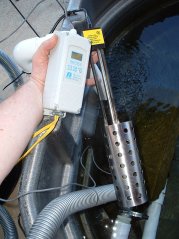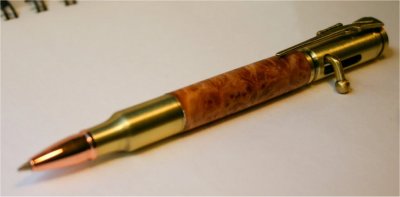When confronted by KHV, you can expect high mortalities. In other words, a realistic expectation would be that more than fifty percent of your fish are going to end up perishing.
Should that scare you? No. It should “aware” you. If there’s something you can do to stop the losses, should you? Would you?
The Israelis want to make fish immune to KHV. It takes about 21-30 degree days to do that. No Koi can live that long with KHV. So they gave them KHV and let them break – then heated them into the low eighties, killing the virus. The re-infected the Koi and did the same thing again. Then they re-infected the Koi a third time and created immune Koi because they had seen the virus long enough to become immune, without dying.
So you’d say: How do you know they killed the virus?
It’s simple but no one gets it…..IF THE VIRUS LIVED THROUGH HEAT THEY WOULD NOT HAVE TO RE INFECT THE KOI. The virus would just reactivate when cooled!!
But what if the Koi had already become immune because of the heat, and the virus DID reactivate? THEN THE KOI WOULD NOT BREAK WITH THE VIRUS SYMPTOMS AGAIN (but they did)…(obviating the need for three “infections”) (See also)
What is so hard to understand? How hard would this be to actually test?
Now, as a result of the increasing incidence of this virus among Japanese import fish, a couple of Koi dealers are preemptively establishing a monthly testing regimen for KHV in their livestock offered for sale. I highly doubt that any more dealers will follow suit because it’s a pain, and it costs more, and they frankly don’t care much if YOUR fish die as long as theirs don’t. Since the virus can hide, I’ve thought it is important that dealers test all fish, even the same fish, each and every month. If the virus rears it’s ugly head, it’s caught quickly and that group of fish can be torched.
I’ve (ELJ) been managing a few cases of KHV this winter. The most notable case used cooling to stall the disease progression, slow the losses, and then whenever possible, used high heat to push the fish up past the virus-optimal temperatures and save the fish. It’s worked in the majority of cases: which lived long enough to go through it.
Heating Koi With KHV Koi Herpes Virus
Feb 8, 2003 – “My kohaku (Matsonosuke) you told me to bring in is in the sun room, and was very sick as you know, before. He is doing great and eating every day …. Also, I brought in a orange gin rin Ogon who got completely better too!!!!!! No torn fins, sores etc.”
So, why do some fish get warmed and die, and others get warmed and live wonderfully?
The answer lies in the virus action, combined with the concurrent presence of infection by bacterial opportunists.
First, the virus is devastating to the structure and integrity of the internal organs. Victims report that the insides of the fish are positively liquefied. Also, damage to the gills can be severe and so, when these fish are warmed, oxygen exchange becomes crucial to a fish which is unable to sufficiently respire.
Secondly, when one tries to “warm a fish past the virus” consideration should be given to the fact that very few of these fish are free of bacterial secondary-invaders. Simply, most of these fish also have Aeromonas or Pseudomonas infections. So, CONTROL of these bacterial secondaries will enhance the success of heating KHV.
If one started the heating regimen with a careful examination, observing severe gill damage could portend a failure (death) during the heating regimen on that particular fish. And, without heating, the chances for that fish are dire anyway. But at least a prediction could be made for a more realistic expectation.
Heating Koi With KHV Koi Herpes Virus

The crucial element is taking it very slowly, employing increased aeration and reduced feeding at least at first. Do NOT pull on Superman’s cape when it comes to dissolved oxygen!
Warming a fish up:
Fish in winter ice water sometimes need to be warmed up for various treatments or to rescue them from genuine cold water illnesses such as “Laying Over”.
To avoid shock, the fish should be put in a very large vat of their own, icy pond water in your garage. I repeat, you’re going to use the icy pond water from your pond, that the fish is used to.
This vat should be at least 75 gallons in size or the temperature will equalize too rapidly and kill the fish. They cannot climb up more than 10 degrees F per 18 hours without serious stress or death.
Let the vat slowly warm to garage temperature using the ambient room air. USE NO HEATER. Do nothing to accelerate the warming process. It’s meant to be slow!
They cannot climb up more than 10 degrees F per 18 hours without serious stress or death.
As the fish warm up, they will become more active. Make sure the vat is covered.
Once they have been in the mid sixties for 24 hours, you can raise the temperature with a commercial aquarium heater or a paint-bucket warmer, by five degrees per day til in the low seventies.
Thermostat https://amzn.to/34JcS3q
Heater https://amzn.to/2Nv8tLv
Past that, if heating KHV, simply aerate the dickens out of the water and jack it up five degrees per day until you’re keeping the fish in the low eighties.





